What Jeff Bezos is going to do after Amazon
Bezos brothers set to blast off
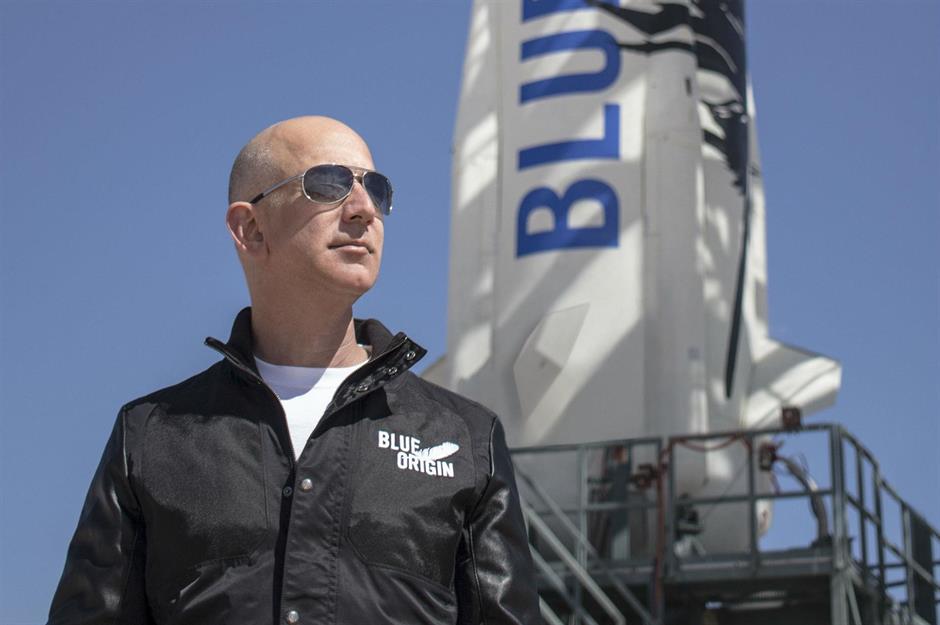
While Jeff Bezos has stepped down as CEO of Amazon, after 27 years at the helm of online retail giant, he's certainly not moved into the slow lane. In fact, Bezos is now turning his attention to his other business interests, many of which look to the future.
The world's richest man is set to fly to space on his spaceflight company Blue Origin's first human flight on 20 July, nearly 52 years after the Apollo 11 moon landing, on what Bezos calls "the greatest adventure", one he says he has wanted to make all his life.
Ahead of next week's space launch, Bezos and Blue Origin have just announced a $200 million (£145m) donation to the Smithsonian Institution – the biggest gift since the Smithsonian was founded in 1846 – with $130 million (£94m) of the donation going towards the creation of a new education centre called the Bezos Learning Center, focusing on STEAM (science, technology, engineering, art and mathematics), at the National Mall in Washington DC.
But what does the spaceflight entail, and what other big plans does Bezos have for his post-Amazon life? Click or scroll through to find out... All dollar amounts in US dollars.
The oldest astronaut...
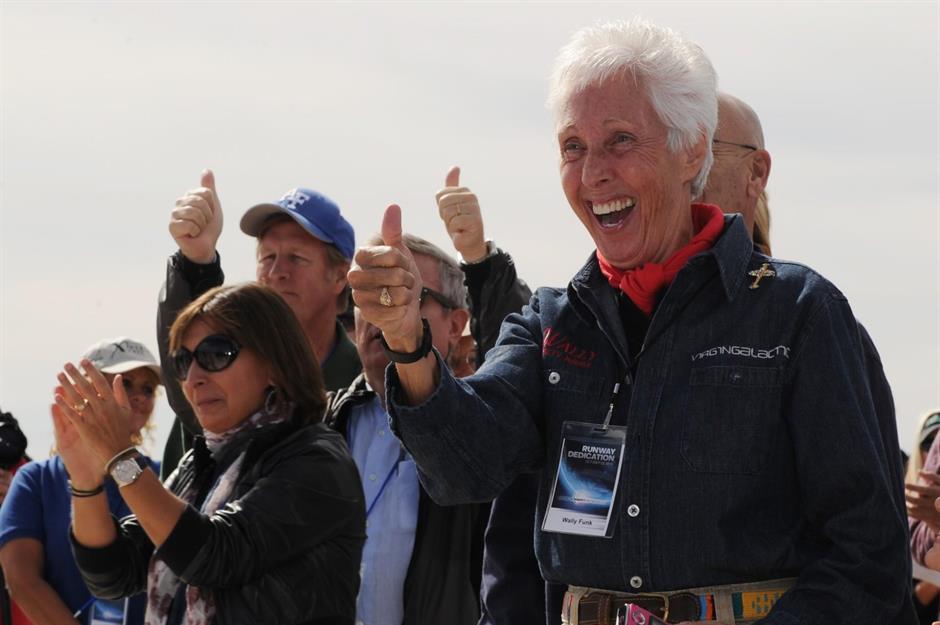
Blue Origin's manned spaceflight is actually taking place two years later than planned, but on 23 July the autonomous New Shepard rocket will take Jeff and his brother Mark Bezos to sub-orbital space. Joining the crew will be the oldest and the youngest astronauts to ever fly to space. The oldest is 82-year-old aviation legend Wally Funk (pictured on the right), who trained to become an astronaut privately when she was just 21 years old but was denied the chance to go to space because of her gender.
...and the youngest astronaut ever
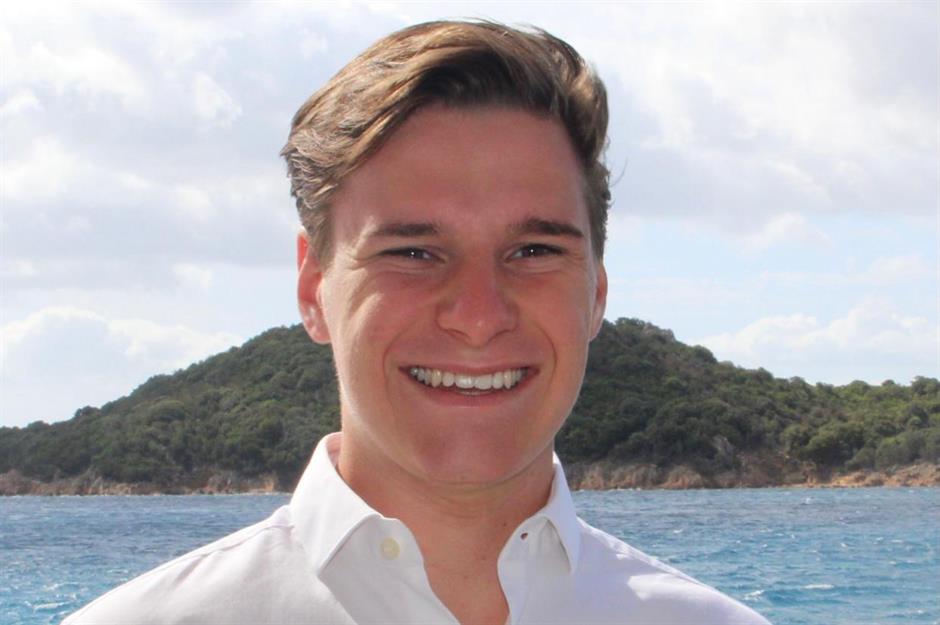
The fourth seat on Bezos’ rocket was auctioned off on 12 June for $28 million (£20.1m) to an anonymous bidder, with the auction money going towards 19 non-profits in the space field. However, the unknown winning ticket holder has since pulled out of the flight due to "scheduling conflicts", and has been replaced by 18-year-old Dutch high school graduate Oliver Daemon, whose father is Joes Daemon, CEO and founder of Somerset Capitol Partners. It's thought that Oliver had bought a seat on the second Blue Origin flight, but his ticket was moved to the first flight when the original ticket owner pulled out. This means Oliver, who is set to study physics at university, will be the first paying customer and the youngest astronaut to head into space.
The first manned flight for Blue Origin
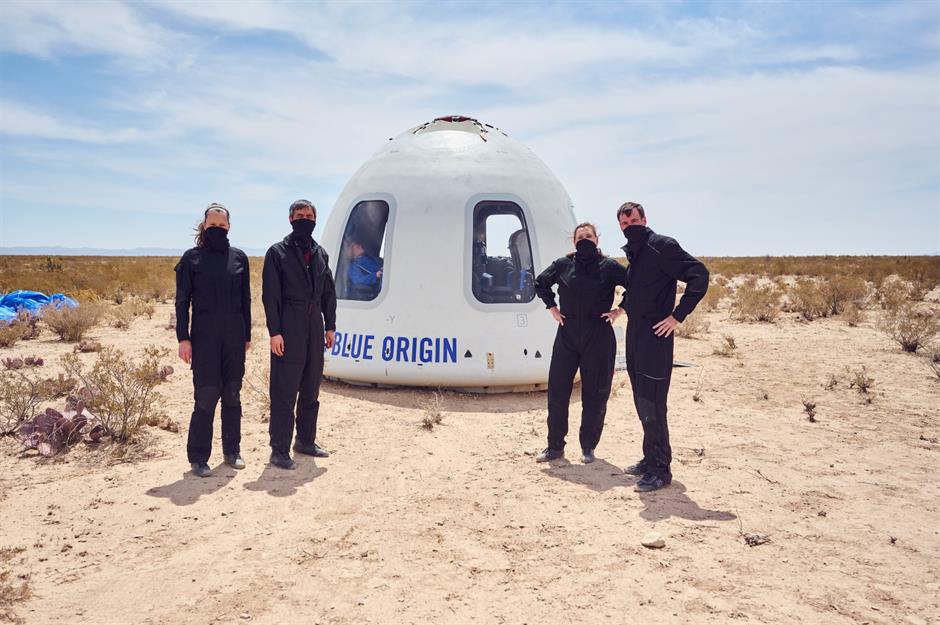
While some say Bezos was beaten by fellow billionaire space racer Richard Branson, who flew to space on 11 July, Bezos doesn't see it that way due to a technicality. Branson's flight reached 55 miles above Earth, high enough for the crew to be classified astronauts by NASA. However, Bezos' crew will travel more than 62 miles above Earth, passing the Kármán Line, which is more widely viewed as the space boundary. There the team will experience a few minutes of weightlessness. The capsule the crew will travel in features large windows through which they will be able to look out into space and see Earth’s curved horizon. The rocket is named after Alan Shepard, the first American astronaut to reach space, and has been in development since 2006, although Bezos created the business in 2000.
Selling Amazon stock to fund Blue Origin
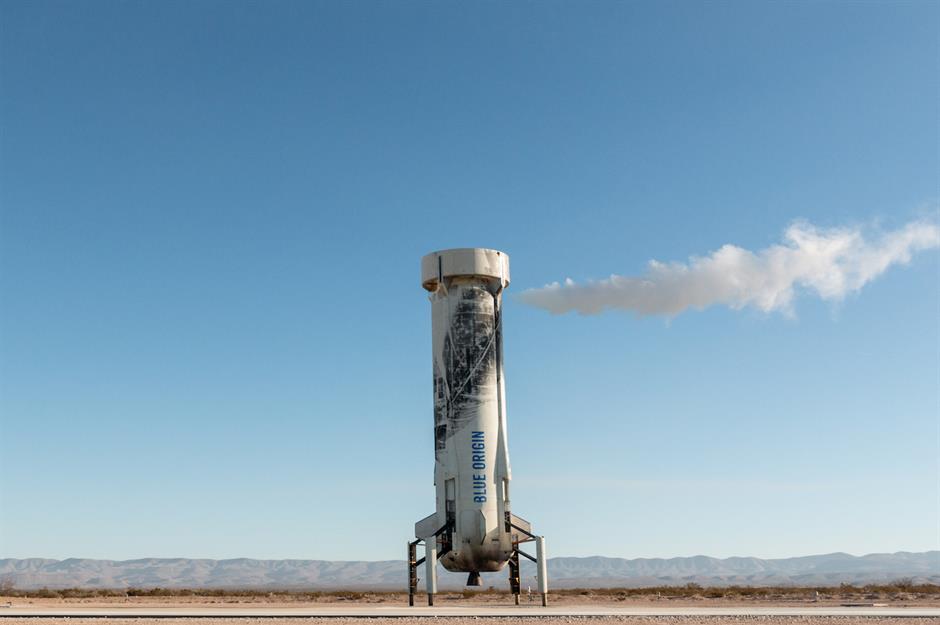
In 2017, New Shepard (pictured) was successful at carrying and landing dummy passengers during test flights. Six more New Shepard vehicles were built following this. Since then New Shepard has undergone several test flights, the latest on 14 April, which the company described as "a critical step in [its] march towards first human flight". Bezos’ high hopes for cosmic colonisation are reflected by his business confidence – he has been selling off at least $1 billion (£733m) of Amazon stock every year for the past few years in order to fund Blue Origin, and in 2020 he accelerated this process when he sold $4.1 billion (£3bn) of Amazon stock in February, followed by more than $3 billion (£2.2bn) in November, and a further $4.9 billion (£3.4bn) in May this year, probably with an eye to now. But this isn't the only ongoing Blue Origin project...
Taking off with New Glenn
.jpg)
New Glenn – named after pioneering astronaut John Glenn – is another of Blue Origin’s creations, with design work beginning back in 2012. This heavy-lift launch vehicle (pictured during take-off) will hopefully be capable of carrying large payloads, as well as actual people, into orbit. New Glenn incorporates BE-4, the world’s most powerful liquid oxygen and natural gas engine. In 2018, Blue Origin received a $500 million (£363.7m) contract with the US Air Force to develop its New Glenn rocket, but in August 2020, when the Air Force selected rivals United Launch Alliance and SpaceX as its launch providers for the next five years, this contract was terminated. Blue Origin had hoped to have New Glenn ready for 2021 for the commercial market, but its debut has now been pushed back to the last quarter of 2022 and the loss of the Pentagon contract was cited as a reason for the delay.
Full throttle ahead

Returning Americans to the moon
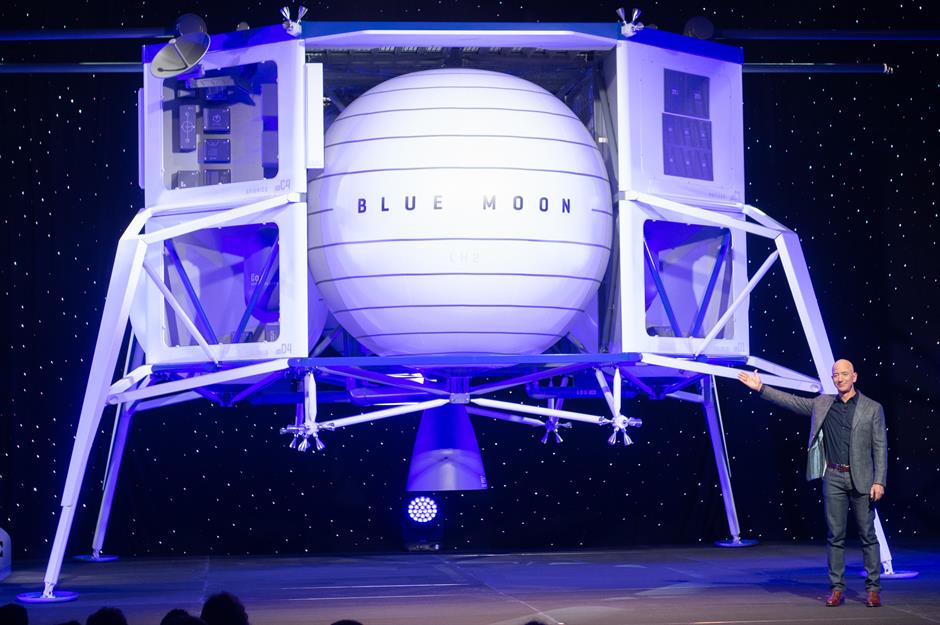
Bezos revealed a new addition to his Blue Origin space vehicles in April 2019. The lunar landing craft Blue Moon was unveiled to the world as a vehicle designed to transport payloads and bring them down safely onto the surface of the moon. Blue Moon is further testimony to Bezos’ vision of our future living in outer space – the billionaire has stated that he plans to "return Americans to the moon" by 2024, which is in line with the goals of the former Trump administration.
Future vision, present confidence
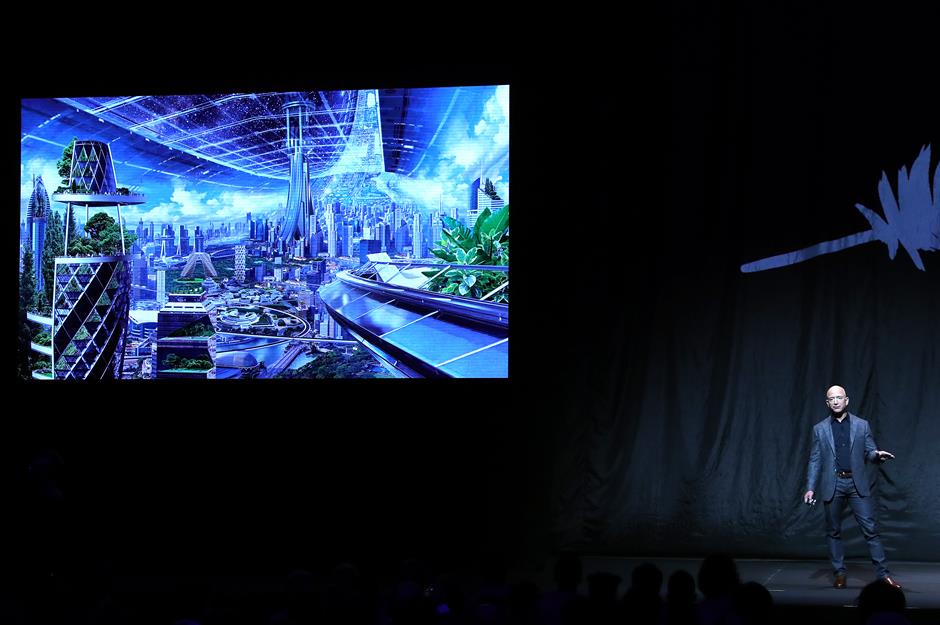
The Blue Moon lander was one of several being developed for NASA's Artemis programme, but Bezos lost out to SpaceX once again in April when NASA awarded a $2.9 billion (£2.1bn) contract to Elon Musk’s company instead of Blue Origin. But Bezos didn’t go down without a fight, and the contract has been temporarily suspended after he contested the decision. Development is now on hold until the US Government Accountability Office adjudicates the protests put forward by Blue Origin and fellow competitor Dynetics. Blue Origin is run day to day by Bob Smith, a veteran of the aerospace industry, although it's reported that Bezos devotes one day a week, said to be Wednesdays, to it. Whether that increases as the space race continues to hot up remains to be seen.
Now let's take a look at some of his other business interests on Earth.
Investments outside of Amazon
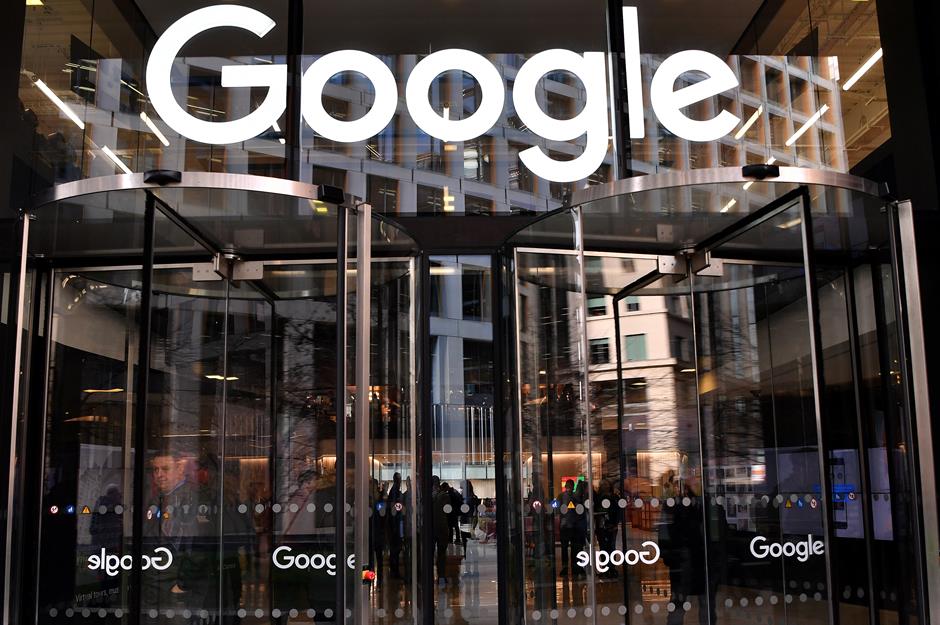
Even while Bezos was working to make Amazon the global giant that it is today he had an eye on the tech market as a whole. In 1998, he invested $1 million (£607k) of his own money in an up-and-coming tech company called Google. Needless to say, as one of the first investors in the business this has brought Bezos huge returns. Bezos has continued to make very astute and extremely timely personal investments, including $112 million (£68.8m) invested in Airbnb in 2011 and, in that same year, $37 million (£22.7m) invested into Uber. A further $4.5 million (£2.8m) was also pumped into co-working space company General Assembly. One of Bezos' most recent personal investments was in 2017 in EverFi, an education software start-up company based in Washington DC.
Bezos Expeditions

The Clock of the Long Now
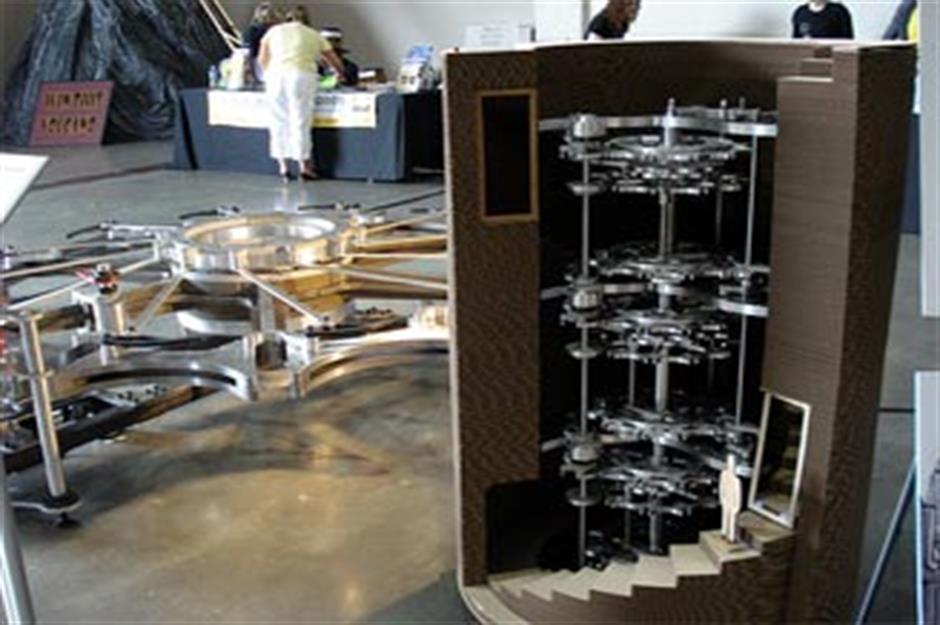
Bezos Expeditions also funds some interesting side-projects. One of these is The Clock of the Long Now, or the 10,000-year clock, which Bezos began building alongside designer Danny Hillis, who had been working on the idea since 1989. Built into the side of a mountain in West Texas, the clock, which should keep in time for 10,000 years and tick just once a year, is more an experiment in long-term thinking rather than a money-spinning endeavour. But, in business terms, it is a multi-organisation project and shows the scope of Bezos’ incredible investment portfolio.
The recovery of a lost Apollo engine
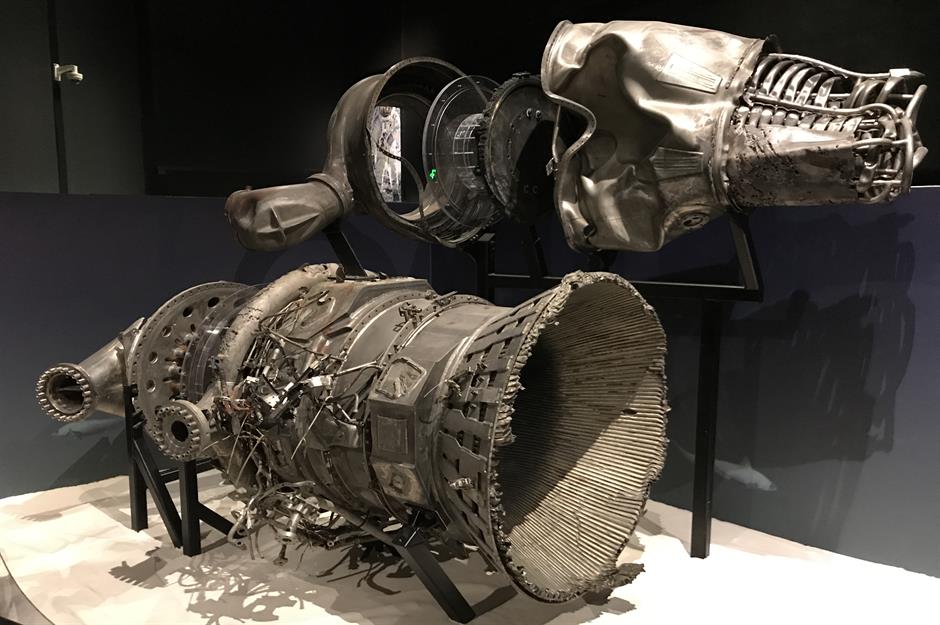
Business Insider investment
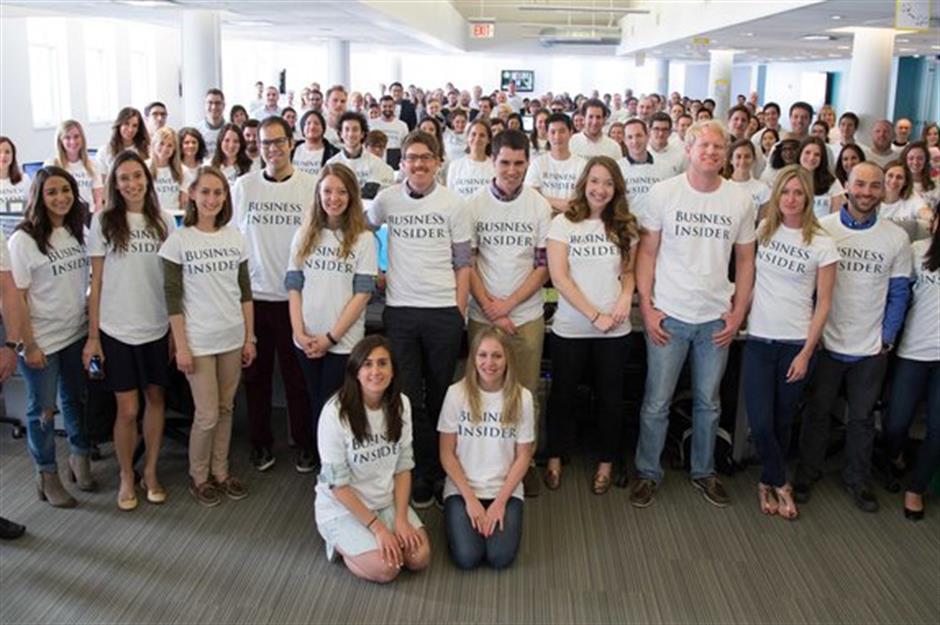
But technology hasn't been the only focus for Bezos Expeditions' investments. Through it, Bezos has also looked to publishing, investing $5 million (£4m) into Business Insider in 2013, as well as a further $12 million (£7.2m) in 2014 and $25 million (£16.2m) in 2015 as a personal investor.
Becoming a media mogul
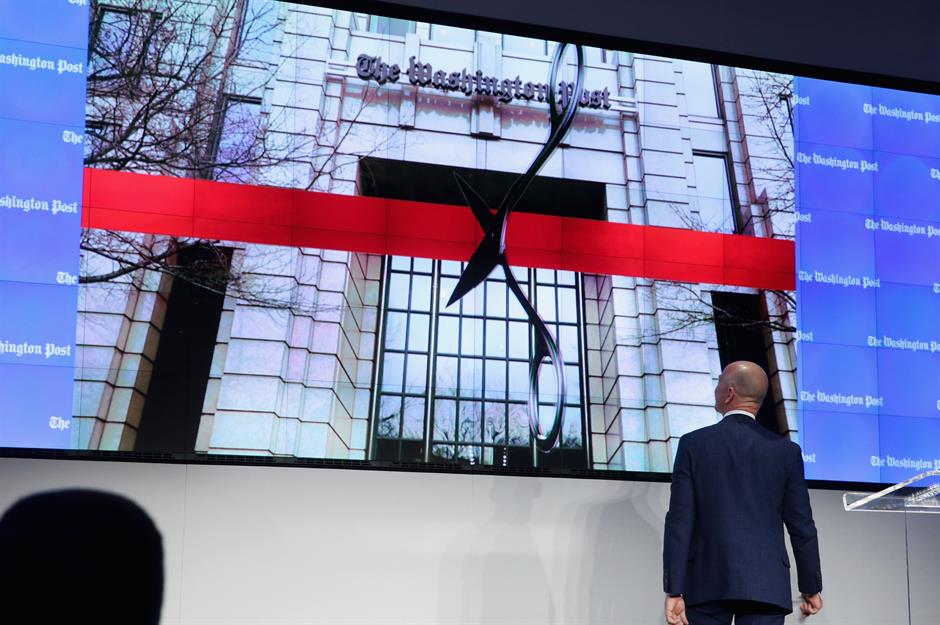
That's not Bezos' only foray into the world of publishing. In 2013 he announced that he was buying The Washington Post for a total of $250 million (£166m). Small change to Bezos perhaps, but he had to establish Nash Holdings, a limited liability company, in order to handle the purchase.
Revitalising The Washington Post
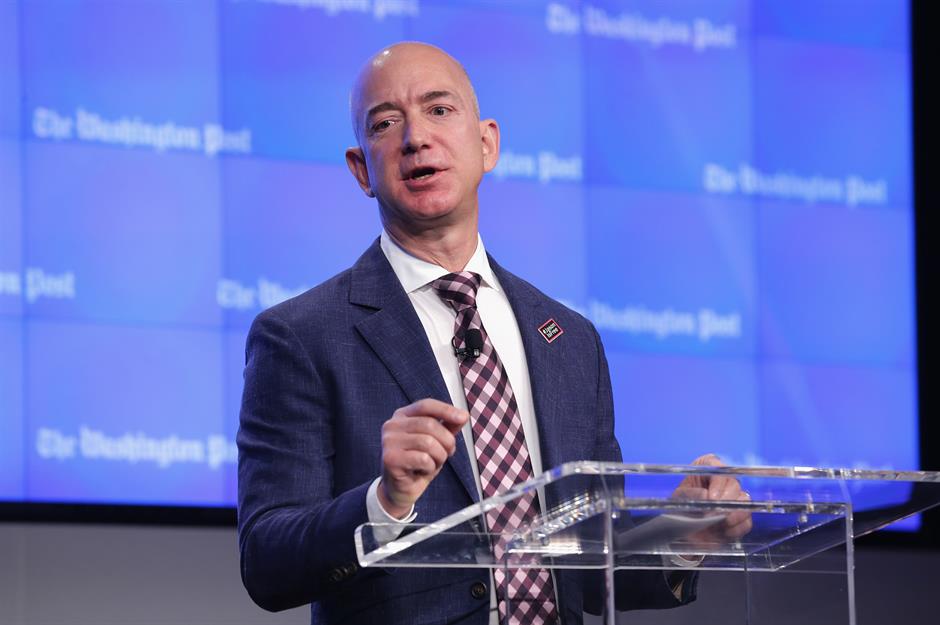
The Washington Post has undergone some changes thanks to Bezos’ astute business vision. In 2016, Bezos restructured the newspaper, expanding it into new digital media and mobile platforms, and also reinvigorating its analytics software. In that year, it became profitable for the first time since Bezos’ takeover. And it may change further, as Bezos named The Washington Post as one of the key business interests he wants to focus on after stepping down as Amazon CEO.
A gigantic luxury yacht
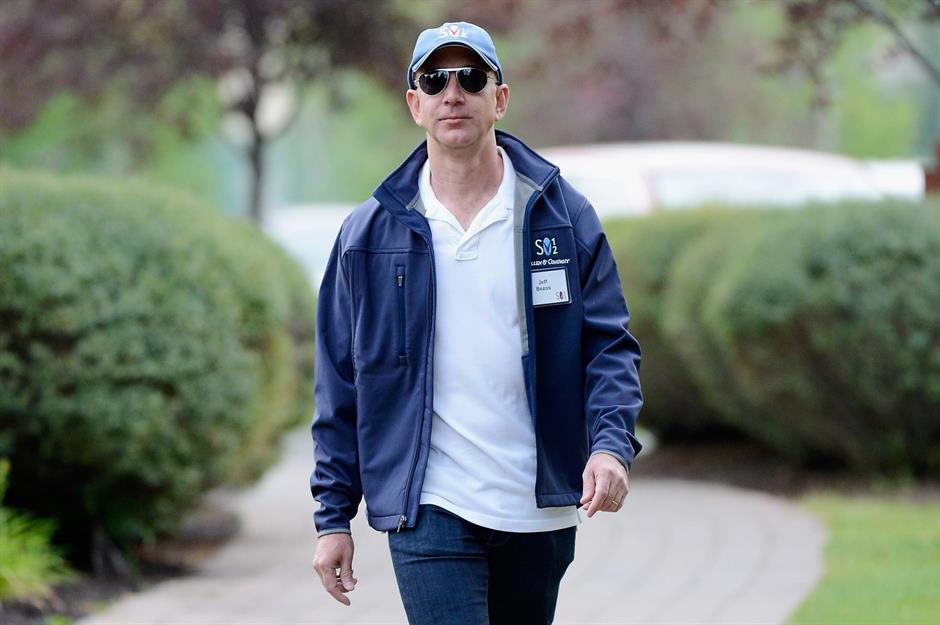
With his space mission firmly underway, it’s recently been revealed that Jeff Bezos’ next venture is to conquer the seven seas. The rocket aficionado has commissioned his first yacht, according to an excerpt from the book Amazon Unbound by journalist Brad Stone, and it will span an impressive 416 feet (127m) and have three masts. A second, support yacht has also been commissioned, which will include its own helipad. Bezos’ creation is anticipated to be “one of the finest sailing yachts in existence”, but further details as to its design remain shrouded in mystery for now.
Day 1 Fund
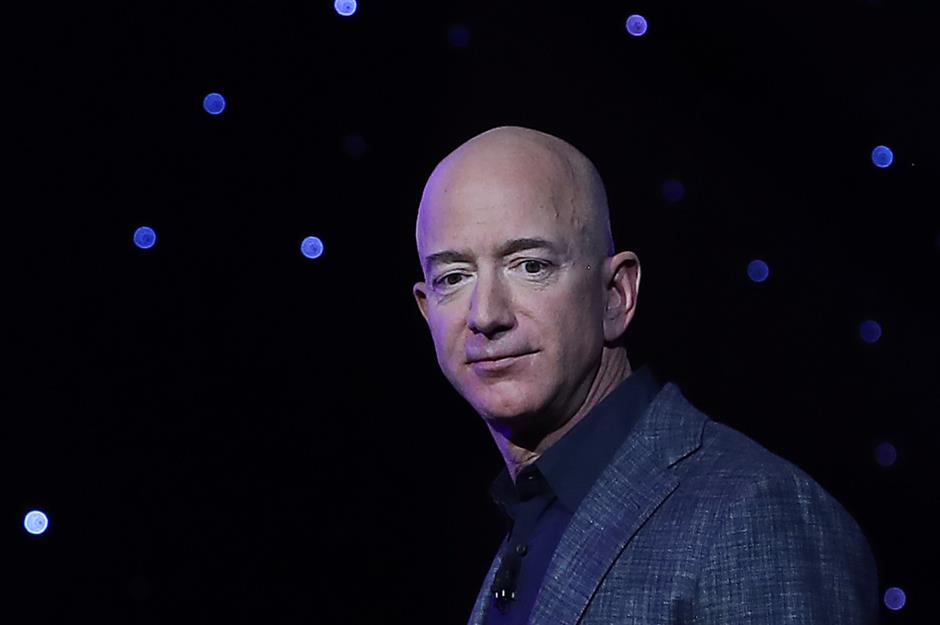
But not all Bezos' future plans revolve around billion-dollar modes of transport. The first initiative Bezos mentioned in his statement on stepping back from Amazon was the Day 1 Fund. The philanthropic venture was launched by Bezos in September 2018, as “a network of new, non-profit, tier-one preschools in low-income communities”. The $2 billion (£1.5bn) project was also set up to fund existing non-profit organisations that provide services for the homeless. This project could be set to grow in 2021 now that Bezos is dedicating more time to it, and experts say some of the money he's raising by selling Amazon shares is likely to be directed to it.
Bezos Earth Fund
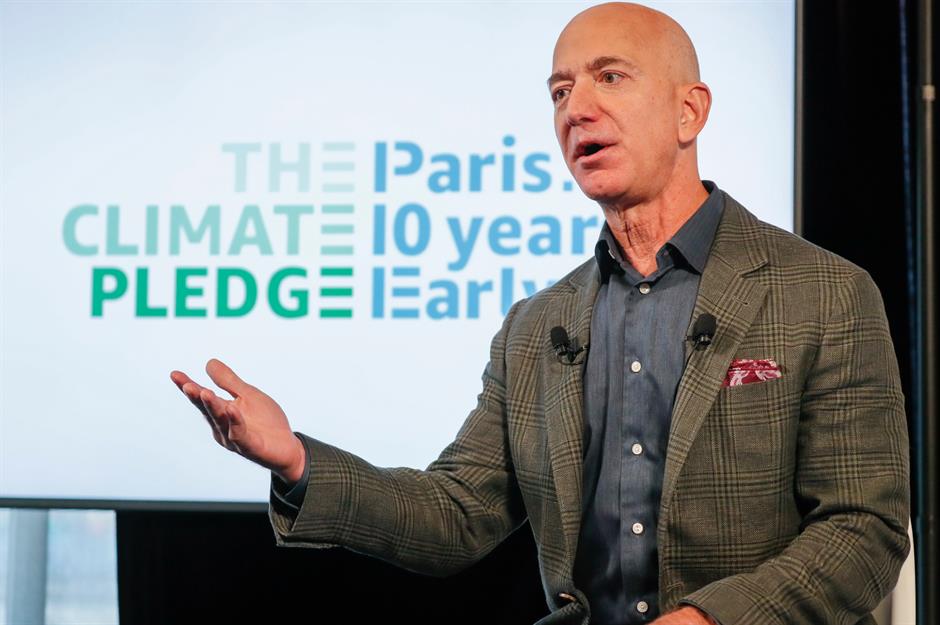
And it seems that planet Earth is as important to Bezos as the moon. In February 2020 Bezos turned his attention to the climate, and launched the Bezos Earth Fund. In an Instagram post at the time, he pledged $10 billion (£7.3bn) to kick off the fund, which he plans to spend by 2030. It issues grants to climate-focused scientists and activists, and acknowledged that "climate change is the biggest threat to our planet". This move came after Bezos' commitment in 2019 to fulfil the terms of the Paris Climate Agreement 10 years early despite President Trump's withdrawal from it. America has since returned to the Agreement now that President Biden is in power. Bezos named the fund as a key project he wants to focus on once he is no longer Amazon CEO. Time will tell what impact Bezos will have on Earth and beyond in the years to come.
Now read about Amazon's future plans
Comments
Do you want to comment on this article? You need to be signed in for this feature